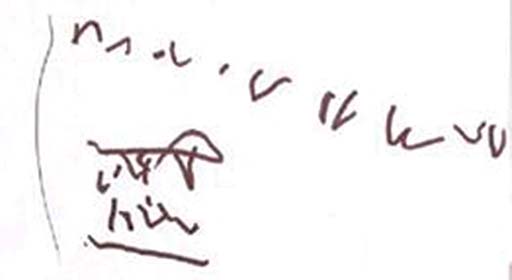1 What is emergent writing?
You start by considering the early writing process.
Activity 1: What is emergent writing?
Look at Figure 1, which shows ‘writing’ by a four-year-old girl. She confidently told her pre-school teacher that she was writing numbers and letters. How would you evaluate this as a piece of writing, or do you think it is merely scribbling? Talk to other teachers in your school about this piece of writing. How do they respond to it?

In its early stages, emergent writing may appear to be little more than scribbles on a page or a cluster of unrelated symbols and shapes. But the girl who did this shows knowledge and awareness of what writing is. She knows that:
- marks on the paper can represent numbers and letters
- writing conveys information
- writing is meant to be read.
Very young children who see writing at home, in school or in the community will start to understand that writing has many different meanings and purposes. They will try to reproduce this, copying what they see and also making their own marks without copying. When they do this they are becoming writers, communicating their ideas on paper. When young students start to write in English, they must pay attention to five things at the same time:
- finger control
- letter formation
- the letters, sounds and shapes of English
- the meaning of English words
- the overall message of their writing.
Pause for thought
|
What you can learn in this unit
